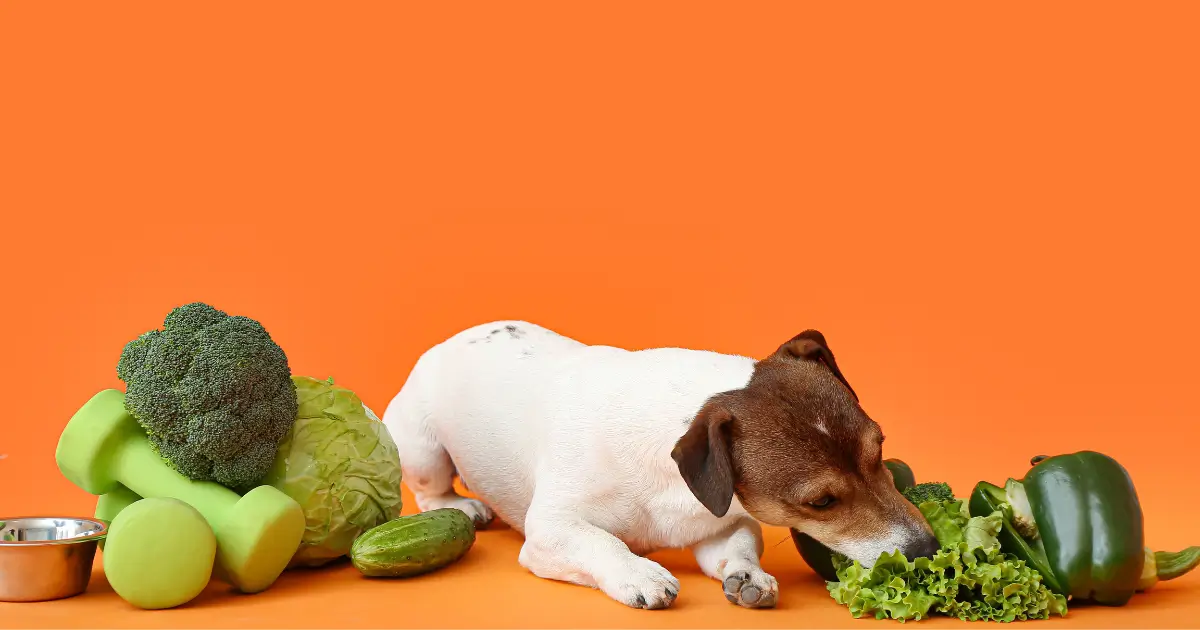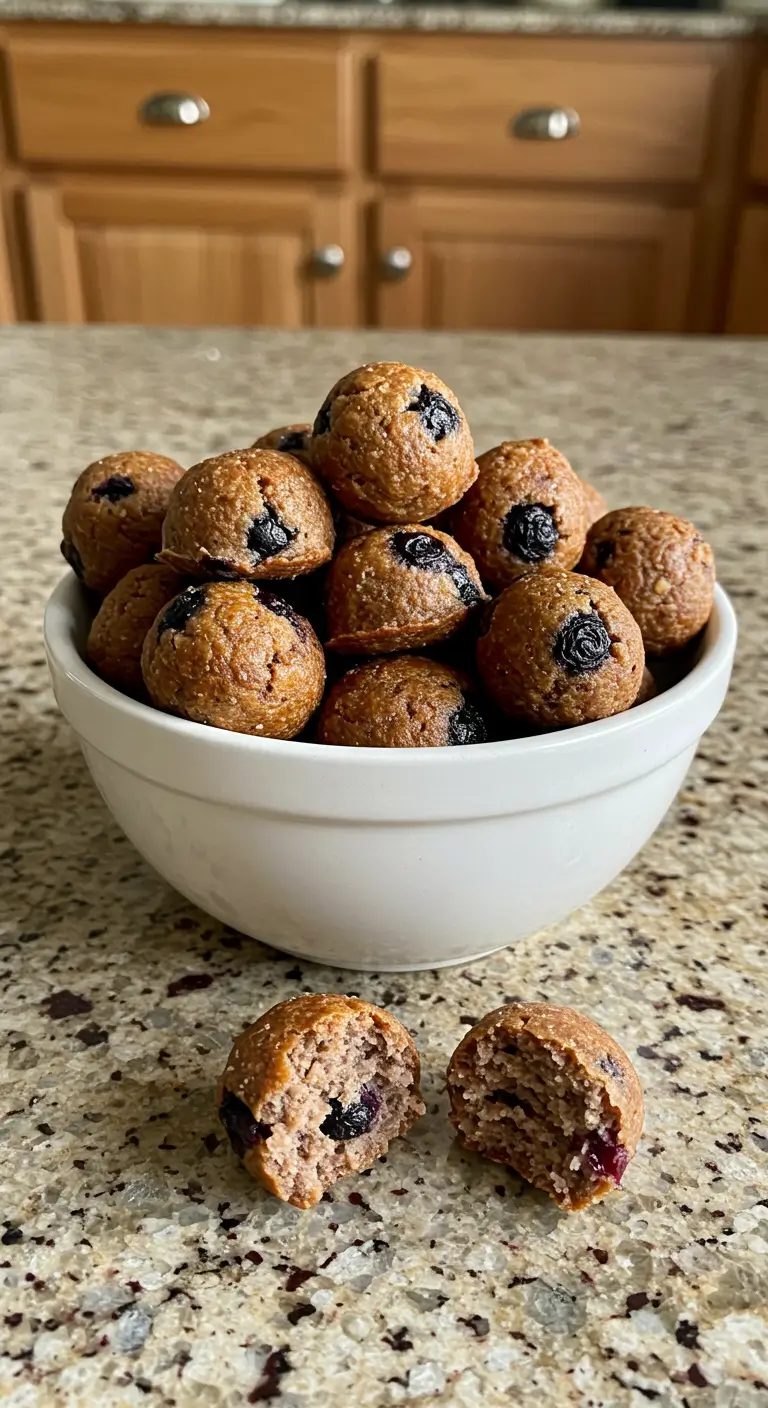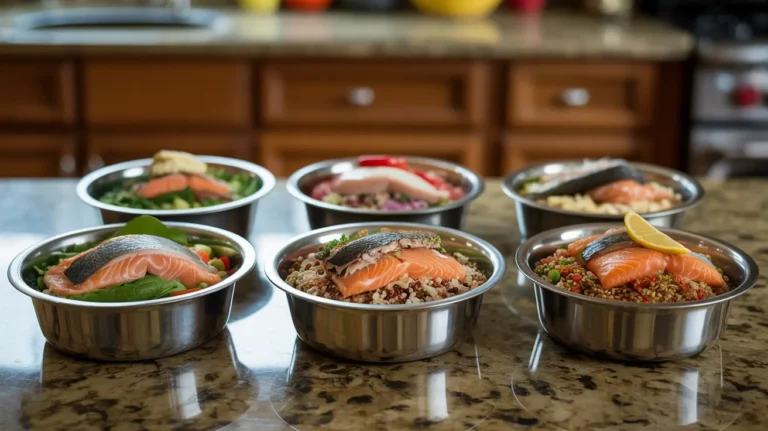What Fruits and Veggies Can Dogs Eat? 20 Safe Options+Guide
Quick Answer: What Fruits and Veggies Can Dogs Eat?
What fruits and veggies can dogs eat safely? Here are the most popular safe options:
Safe Fruits:
- Apples (remove seeds)
- Blueberries
- Watermelon (seedless)
- Bananas (in moderation)
- Strawberries
Safe Vegetables:
- Carrots (raw or cooked)
- Green beans
- Broccoli (steamed, small amounts)
- Sweet potatoes (cooked)
- Spinach (cooked, occasional)
Important: Always introduce new foods gradually and remove seeds, pits, or toxic parts before serving.
As a dog owner, you’ve likely wondered what fruits and veggies can dogs eat safely. Adding vegetables to your dog’s diet can provide important nutrients, fiber, and variety to their meals and treats. Many pet parents search for information about what fruits and veggies can dogs eat to enhance their pet’s nutrition naturally. While certain fruits are beneficial, vegetables offer a whole range of different advantages that can complement your canine’s diet.
This comprehensive guide focuses primarily on vegetables that are safe and beneficial for dogs, with a particular emphasis on preparation methods and serving suggestions to ensure your furry friend gets maximum nutrition with minimum risk. For a more detailed exploration of safe fruits for dogs, you can check out our What Fruits Can Dogs Eat: 15 Safe Amazing Options For Pups.
Table of Contents
Complete List: What Fruits and Veggies Can Dogs Eat Daily
When asking “what fruits and veggies can dogs eat regularly,” focus on these everyday options:
Daily Safe Options:
- Carrots – Raw for dental health, cooked for easier digestion
- Green beans – Low calorie, high fiber
- Zucchini – Hydrating and mild
- Apples – Remove core and seeds first
- Blueberries – Antioxidant powerhouse
Occasional Treats:
- Broccoli (limit to 10% of diet)
- Spinach (cooked only, avoid with kidney issues)
- Sweet potato (cooked thoroughly)
Never feed: Grapes, onions, garlic, avocado, or wild mushrooms.
Understanding Why Vegetables Matter for Dogs
Before diving into specific vegetables, it’s important to understand why adding veggies to your dog’s diet can be beneficial. When researching what fruits and veggies can dogs eat, you’ll discover that while dogs are primarily carnivores, they can benefit from certain plant foods that provide:
- Additional vitamins and minerals not found in meat
- Dietary fiber for digestive health
- Antioxidants that help combat cellular damage
- Low-calorie treats for weight management
- Hydration support through moisture-rich vegetables
- Variety in texture and flavor to enrich their dining experience
Remember that vegetables should supplement, not replace, a high-quality dog food that meets your pet’s basic nutritional requirements. Some commercial veggie dog food options are available, but these should be carefully evaluated to ensure they meet your dog’s nutritional needs. Generally speaking, no more than 10% of your dog’s diet should consist of plant additions.
General Guidelines for Feeding Vegetables to Dogs
When introducing fruits and veggies for dogs, follow these important principles:
- Start small with new vegetables to monitor for any adverse reactions
- Prepare appropriately by washing thoroughly and removing inedible parts
- Cut into appropriate sizes to prevent choking hazards
- Cook certain vegetables to improve digestibility (detailed below)
- Avoid seasonings or additives like salt, garlic, onion, or spices
- Never feed spoiled vegetables to your dog
A common question pet owners ask is: Can dogs eat canned vegetables? Generally, the answer is no – most canned vegetables contain added sodium, preservatives, or other ingredients that may be harmful to your pet. For your dog’s health, fresh vegetables are nearly always the better choice.
Leafy Greens for Dogs
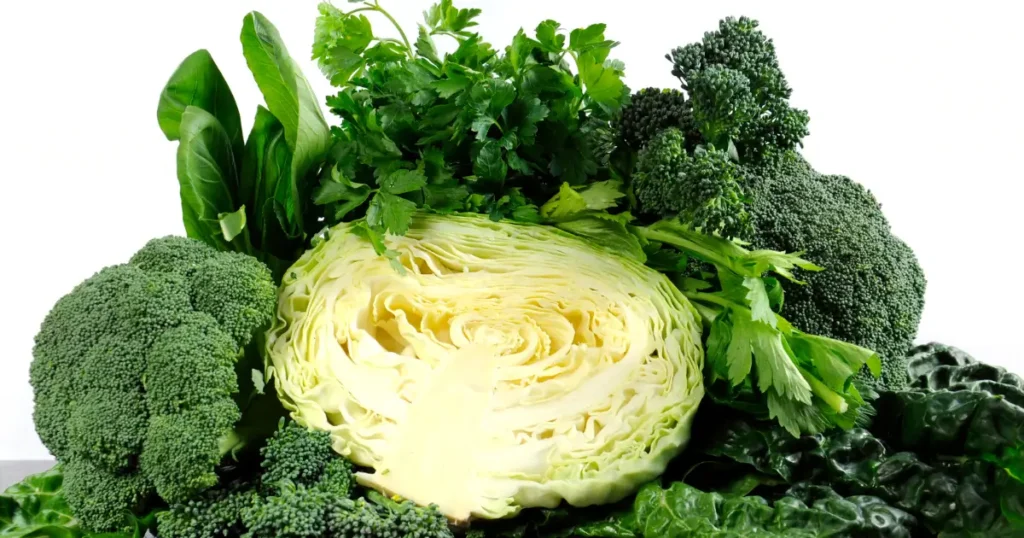
Leafy greens are nutritional powerhouses that can add valuable vitamins and minerals to your dog’s diet. When considering what fruits and veggies can dogs eat safely, these leafy options rank high on the list.
Spinach
In addition to minerals like iron and antioxidants, spinach is a good source of vitamins A, B, C, and K. However, it does contain small amounts of oxalic acid, which can interfere with calcium absorption.
Benefits:
- Supports immune function
- Contains anti-inflammatory properties
- Promotes heart health
How to serve: Lightly steam or blanch spinach (never serve raw) and finely chop before adding a small amount to your dog’s regular food. Limit serving to no more than 1-2 tablespoons for medium-sized dogs, less for smaller breeds.
Precautions: Dogs with kidney issues should avoid spinach due to the oxalic acid content. Large amounts can potentially lead to kidney damage, so moderation is essential.
Arugula
Arugula provides excellent nutritional benefits with fewer concerns than spinach. This peppery green is lower in oxalates while still offering vitamins K, A, and folate.
Benefits:
- Supports bone health through vitamin K
- Contains cancer-fighting compounds
- Lower in oxalates than spinach
How to serve: Finely chop fresh, thoroughly washed arugula and sprinkle a small amount (1-2 teaspoons for small dogs, 1 tablespoon for larger breeds) over regular food. Although it can be served raw, arugula should be added gradually.
Precautions: The peppery flavor might not appeal to all dogs. Start with very small amounts to test acceptance.
Collard Greens
Collard greens are a great way to get fiber, calcium, and vitamins A, C, and K. They’re generally safer than spinach for regular feeding.
Benefits:
- Support healthy vision
- Promote bone health
- Aid digestion through fiber content
How to serve: Always cook collard greens to break down the tough cellular structure. Steam or boil (without seasonings) until tender, then chop finely and mix a small amount into your dog’s food.
Precautions: Like most cruciferous vegetables, collard greens can cause gas if fed in large quantities. Watch your dog’s digestion and start out slowly.
Dandelions
Often overlooked, dandelion greens are actually highly nutritious and can be beneficial for dogs when properly prepared.
Benefits:
- Support liver health
- Contains natural diuretic properties
- Provide vitamins A, C, K, and E
How to serve: Use only greens from areas that haven’t been treated with pesticides or herbicides. Wash thoroughly, chop finely, and blanch briefly before adding small amounts to your dog’s food.
Warnings: Not all dogs will enjoy the bitter flavor. Steer clear of dandelions gathered from the side of the road or from potentially chemically treated areas.
Root Vegetables for Dogs
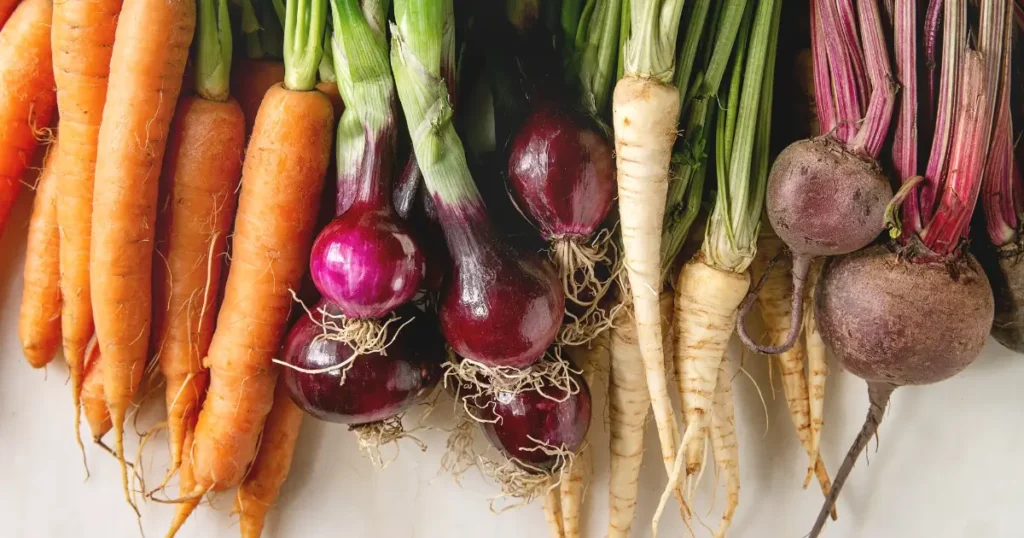
Root vegetables are generally well-tolerated by dogs and provide excellent sources of vitamins, minerals, and fiber. They tend to be higher in carbohydrates than leafy greens, so portion control is important, especially for dogs on weight management plans.
Carrots
Carrots are perhaps the most popular vegetable for dogs, and for good reason. They’re crunchy, sweet, and packed with nutrients.
Benefits:
- Rich in beta-carotene for eye health
- Provide vitamin A and fiber
- Help clean teeth when served raw
- Low in calories
How to serve: Carrots can be served raw as a crunchy treat (cut into appropriate sizes to prevent choking) or lightly steamed and mashed for easier digestion. They can also be grated over regular food.
Precautions: Cut into appropriate sizes based on your dog’s size to prevent choking hazards.
Turnips
Turnips are lesser-known vegetables that can be beneficial additions to your dog’s diet.
Benefits:
- High in fiber and vitamin C
- Contain antioxidants
- Support digestive health
Serving tips: Always cook turnips before giving them to your dog. Boil or steam without seasonings, then mash or cube into small pieces. Start with no more than 1-2 teaspoons for small dogs.
Precautions: Some dogs may experience gas from turnips. If this occurs, smaller portions or discontinued feeding may be necessary.
Parsnips
Similar to carrots, parsnips have unique nutritional value and flavor.
Benefits:
- Rich in potassium
- Contains folate and vitamin C
- Support kidney function
- Provide dietary fiber
How to serve: Lightly cook parsnips by steaming or boiling until soft. Remove the tough core if present, and serve in small, bite-sized pieces mixed with regular food.
Precautions: Parsnips are higher in calories than some other vegetables, so proper portion control is important, especially for overweight dogs.
Jicama
Jicama is a crunchy, refreshing root vegetable that’s relatively low in calories and high in fiber.
Benefits: In addition to minerals like iron and antioxidants, spinach is a good source of vitamins A, B, C, and K.
- High in vitamin C
- Contains prebiotic fiber for gut health
- Low in calories
- High water content for hydration
How to serve: Peel jicama thoroughly (the skin is toxic) and cut into small slices or sticks that are appropriate for your dog’s size. Jicama is a crunchy treat that can be served raw.
Caution: Rotenone, which is toxic to dogs, is present in the skin, stem, and leaves of the jicama plant; only the flesh is safe for dogs. Peel completely every time.
Sweet Potato Skins
While the flesh of sweet potatoes is commonly recommended for dogs, the skins are a topic of debate. When properly prepared, sweet potato skins can provide additional fiber and nutrients.
Benefits:
- Rich in fiber
- Contain additional nutrients not found in the flesh alone
- May support digestive health
How to serve: If serving sweet potato skins, they must be thoroughly washed and fully cooked until soft. The sweet potato should be baked or boiled until completely tender. Small pieces of skin can be offered alongside the flesh.
Precautions: Only serve in moderation, as excessive fiber can cause digestive upset. Never serve raw sweet potato skins. Steer clear of skins that exhibit any sprouting or green coloring.
Cruciferous Vegetables for Dogs
Cruciferous vegetables offer significant nutritional benefits but require special attention to preparation to prevent digestive upset. When researching what fruits and veggies can dogs eat safely, these vegetables should be introduced carefully.
Broccoli
Broccoli contains valuable nutrients but it also contains isothiocyanates, compounds that can cause gastric irritation in some dogs if fed in large amounts.
Benefits:
- High in vitamin C and fiber
- Contains antioxidants
- Supports immune function
- Low in calories
How to serve: Lightly steam broccoli florets to soften them and make them more digestible. Cut into small pieces and limit to no more than 10% of your dog’s daily food intake. The stems should be cut into very small pieces to prevent choking.
Precautions: Too much broccoli can cause gas and digestive upset. The florets are safer than the stalks, which can be choking hazards if not properly cut.
Cauliflower
Cauliflower provides similar benefits to broccoli but with a milder flavor that some dogs may prefer.
Benefits:
- Contains vitamins C, K, and B6
- Provides antioxidants
- Supports digestive health through fiber
- Anti-inflammatory properties
How to serve: Steam or boil cauliflower until soft, then chop into small pieces before adding to your dog’s food. Small portions should be introduced gradually (1-2 tablespoons for medium-sized dogs).
Precautions: Like other cruciferous vegetables, cauliflower can cause gas and bloating if fed in large amounts. Cooking thoroughly helps reduce this risk.
Other Vegetables for Dogs
Beyond the categories already covered, several other vegetables can be valuable additions to your dog’s diet. When investigating what fruits and veggies can dogs eat safely, consider these diverse options.
Cucumber
Cucumbers are hydrating, low-calorie treats that many dogs enjoy, especially during warmer months.
Benefits:
- Very high water content (96%)
- Extremely low in calories
- Contains vitamins K, C, and B1
- Provides minerals like potassium and magnesium
How to serve: Wash thoroughly and slice into appropriate sizes. Cucumbers can be served raw and are often enjoyed for their crunchy texture. Remove seeds for dogs with sensitive digestion.
Precautions: While generally very safe, introduce gradually as with any new food. Some dogs may experience soft stools if given too much cucumber at once.
Zucchini
Zucchini is one of the best vegetable options for dogs due to its mild flavor, low calorie content, and good nutritional profile.
Benefits:
- Low in calories
- High in water content
- Contains vitamins A, C, and B6
- Provides manganese and potassium
How to serve: Zucchini can be served raw in thin slices or lightly steamed and chopped. Many dogs enjoy raw zucchini sticks as crunchy treats, while others may prefer it softened through light cooking.
Precautions: Remove any large seeds and start with small portions. Zucchini is generally well-tolerated by most dogs.
Artichokes
Artichokes are less commonly given to dogs, but can provide unique nutritional benefits when properly prepared.
Benefits:
- Rich in fiber
- Contains antioxidants
- Provides folate and vitamins C and K
- Supports liver health
How to serve: Only the hearts of artichokes should be given to dogs, not the tough outer leaves. Cook thoroughly until soft, remove any tough portions, and cut into small pieces before offering as an occasional treat.
Precautions: The tough texture of artichokes presents a choking hazard if not properly prepared. Only serve the soft, fully-cooked hearts in small amounts.
Seaweed
Certain types of seaweed can be beneficial for dogs, providing unique nutrients not commonly found in land vegetables.
Benefits:
- Rich in iodine and other minerals
- Contains omega-3 fatty acids
- Provides unique antioxidants
- May support thyroid function
How to serve: Only use seaweed products specifically formulated for dogs or plain, unseasoned nori sheets in very small amounts. Never feed wild seaweed from beaches, which can contain pollutants and excessive salt.
Precautions: Excessive iodine can be harmful, so seaweed should only be given occasionally and in small amounts. Commercial seaweed snacks for humans often contain excessive salt and seasonings and should be avoided.
Vegetables to Avoid Feeding Dogs
While many vegetables are safe and beneficial, others can be harmful or even toxic to dogs. When learning about what fruits and veggies can dogs eat safely, be sure to avoid these dangerous options:
- Onions and garlic: include thiosulfate, which can harm red blood cells and result in anemia.
- Leeks and chives: Part of the same family as onions and garlic, with similar toxic effects
- Wild mushrooms: Can cause severe toxicity or death
- Rhubarb: Contains oxalates that can affect the nervous system and kidneys
- Unripe tomatoes: Green parts contain solanine, which can be toxic
- Corn cobs: While corn kernels are generally safe in moderation, corn cobs present serious choking and obstruction hazards
- Avocado: The pit, skin, and leaves contain persin, which can cause vomiting and diarrhea
Preparation Methods for Vegetables
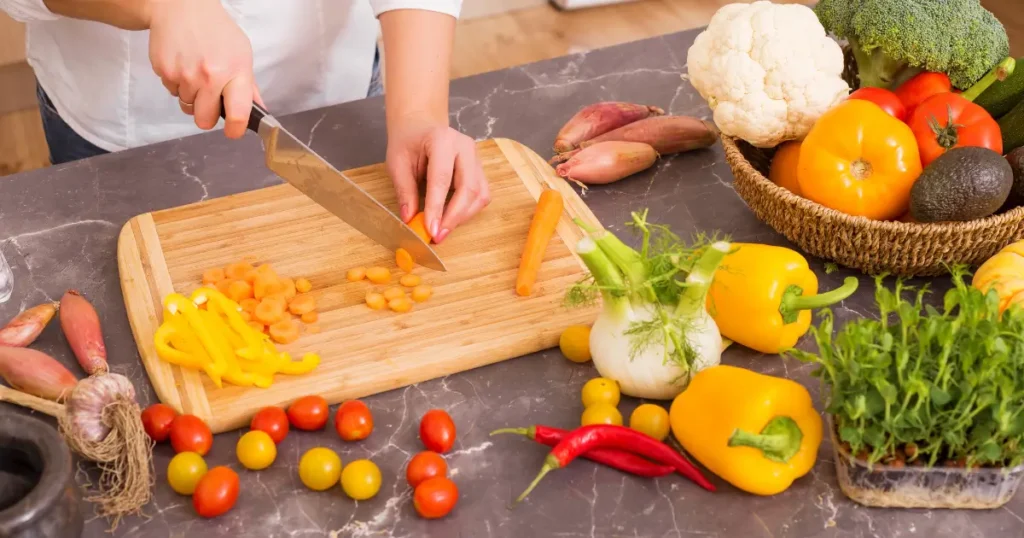
How you prepare vegetables for your dog significantly impacts both safety and nutritional value. When deciding what fruits and veggies can dogs eat, consider these preparation guidelines:
Raw vs. Cooked
Some vegetables are better served raw, while others should be cooked for safety and digestibility:
Best served raw:
- Cucumber
- Zucchini (in thin slices)
- Carrots (for dental benefits, though cooking improves nutrient availability)
Should be cooked:
- Broccoli and cauliflower (lightly steamed)
- Sweet potatoes and their skins (thoroughly cooked)
- Leafy greens like spinach and collard greens
- Root vegetables like turnips and parsnips
Safe Cooking Methods
When cooking vegetables for dogs:
- Steaming preserves the most nutrients while softening the vegetable
- Boiling can make vegetables very soft, but may remove some water-soluble vitamins
- Baking works well for starchy vegetables like sweet potatoes
- Blanching is ideal for leafy greens to maintain nutrients while improving digestibility
Avoid These Preparations
Never serve vegetables to dogs with:
- Salt or seasonings of any kind
- Butter, oil, or fat added during cooking
- Garlic or onion, even in small amounts
- Sauces or dressings of any kind
Can Dogs Eat Canned Vegetables?
A common question among dog owners is whether canned veggies are a practical substitute for fresh ones. In general, can dogs eat canned vegetables safely? The answer is usually no, for several important reasons:
- Most canned vegetables contain added sodium, which is unhealthy for dogs
- Preservatives and other additives may be present
- Some cans are lined with BPA, which can leach into the food
- The canning process destroys certain nutrients
- Many canned vegetables include seasonings or other ingredients that may be harmful
If you must use canned vegetables in a pinch, look for varieties specifically labeled “no salt added” and rinse thoroughly before serving to remove any residual sodium or preservatives. However, fresh or frozen vegetables (without added ingredients) are always preferable when selecting fruits and veggies for dogs.
Veggie Dog Food: Commercial Options
Some commercial dog foods emphasize vegetable content. While evaluating these veggie dog food options, consider:
- Dogs require animal protein for essential amino acids
- Completely vegetarian diets are generally not recommended for dogs
- Look for veggie dog food that includes vegetables as complementary ingredients to high-quality animal proteins
- Consult your veterinarian before switching to any specialized diet
Commercial treats that incorporate vegetables can be a convenient option, but check ingredient lists carefully to avoid artificial additives, excessive salt, or preservatives. Well-formulated veggie dog food can be part of a balanced diet but should be selected with care.
Introducing Vegetables to Your Dog’s Diet
When introducing fruits and veggies for dogs who haven’t had them before:
- Start extremely small – a single piece or teaspoon
- Monitor for 24-48 hours for any adverse reactions
- Gradually increase the amount if well-tolerated
- Introduce only one new vegetable at a time
- Keep a food journal to track which vegetables your dog enjoys and tolerates well
Some dogs may be hesitant to try vegetables. You can increase acceptance by:
- Mixing small amounts with their regular food
- Adding vegetables to a food-dispensing toy
- Freezing vegetable purees in ice cube trays for refreshing treats
- Adding other flavors your dog likes to vegetables (such as a little peanut butter on celery)
Learning what fruits and veggies can dogs eat is only part of the process; how you introduce them matters tremendously for long-term success.
Signs of Vegetable Intolerance
Watch for these signs that a particular vegetable doesn’t agree with your dog:
- Vomiting or diarrhea
- Excessive gas or bloating
- Lethargy or discomfort
- Changes in appetite
- Itching or skin reactions (rare, but possible)
If you notice any of these symptoms after introducing a new vegetable, discontinue that specific item and consult your veterinarian if symptoms persist.
Creative Ways to Serve Vegetables to Dogs
Make vegetables more appealing to your dog with these serving ideas:
- Frozen vegetable chunks for teething puppies or hot days
- Vegetable puree mixed into regular food for picky eaters
- Dehydrated vegetable chips for crunchy treats (without seasonings)
- Vegetable-stuffed toys for mental stimulation
- “Hidden” vegetables pureed and mixed into homemade treats
Many dogs who initially reject vegetables come to enjoy them when presented in engaging ways.
Key Takeaways About Vegetables for Dogs
- Most vegetables should be introduced gradually and in small amounts
- Preparation matters – some vegetables should be cooked, others can be raw
- Portion control is crucial; in general, vegetables shouldn’t account for more than 10% of your dog’s diet.
- Individual tolerance varies – what works for one dog may not work for another
- Before making big dietary changes for your dog, especially if your dog has a medical condition, speak with your veterinarian.
- Fresh is best – when considering what fruits and veggies can dogs eat, fresh options are preferable to canned vegetables
Important Veterinary Disclaimer
This information is meant to teach you something, but it shouldn’t take the place of professional veterinary advice. Always talk to your vet before giving your dog new foods, especially if they have health problems, allergies, or dietary restrictions. If your dog has any problems with digestion or has a bad reaction after eating new foods, call your vet right away.
Conclusion
Incorporating appropriate vegetables into your dog’s diet can provide valuable nutrients, fiber, and variety that support overall health. This guide has covered what fruits and veggies can dogs eat safely, with a focus on vegetables that offer the most benefits with the least risk.
Remember that every dog is an individual with unique preferences and tolerances. Pay attention to your pet’s responses when introducing new foods, and always prioritize a balanced diet appropriate for your dog’s age, size, and health status.
When selecting fruits and veggies for dogs, focus on variety, moderation, and proper preparation to ensure your canine companion receives the maximum benefit from these nutritious additions to their diet.
References
For more information about safe foods and nutrition for dogs, consult these authoritative veterinary sources:
- American Kennel Club’s comprehensive guide on fruits and vegetables dogs can and can’t eat
- ASPCA Animal Poison Control Center’s list of people foods to avoid feeding pets
- PetMD’s detailed guide on safe vegetables for dogs
- Pet Poison Helpline
Frequently Asked Questions
Are vegetables necessary in a dog’s diet?
Technically, no. Dogs can get complete nutrition from high-quality commercial dog foods formulated to meet their nutritional needs. However, vegetables can provide beneficial supplemental nutrients, fiber, and low-calorie treats that support overall health.
How much vegetable matter should I feed my dog?
Vegetables should generally make up no more than 10% of your dog’s total diet. Start with small amounts and adjust based on your dog’s tolerance and your veterinarian’s recommendations.
Can puppies eat vegetables?
Yes, puppies can eat vegetables, but with extra caution. Their digestive systems are more sensitive, and their nutritional needs differ from adult dogs. When researching what fruits and veggies can dogs eat for puppies specifically, introduce vegetables in very small amounts, ensure proper preparation to prevent choking, and focus primarily on their puppy-formulated food for balanced nutrition during this critical growth period.
Can vegetables help my overweight dog lose weight?
Low-calorie vegetables can be helpful as part of a weight management plan. They can add volume and nutrients to meals without adding many calories, helping your dog feel fuller. Nonetheless, weight loss should always be monitored by a veterinarian and involve portion control of their normal diet as well as suitable exercise.
What if my dog refuses to eat vegetables?
Not all dogs readily accept vegetables. Try different preparation methods, start with sweeter vegetables like carrots, mix small amounts with foods your dog already enjoys, or use vegetable-based commercial treats specifically formulated for dogs. Some specialized veggie dog food products can also help introduce plant matter in a more appealing form. Remember that vegetables are a supplement, not a requirement, so don’t force the issue if your dog consistently refuses them.

